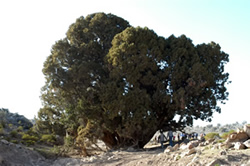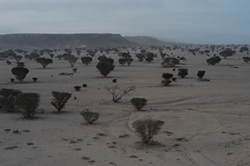Due to low rainfalls the vegetation in Oman without irrigation is sparely and dominated by resistant date palms. In the mountains, however, trees like cedars and olives are growing. In Dhofar, dependent on the monsoon, a lot of different and for the Arabian Peninsula untypical plants are growing. This region is also the source of frankincense, which is a resin from the Boswellia sacra tree.
Oman
has about 85 indigenous bird species, but also migratory birds can be
watched. In total more than 450 bird species have been
sighted. The coastal waters are the home of many fish
and whales and dolphins can be watched
there. Sea turtles lay their eggs on the beaches of Oman
and there are several sanctuaries to protect them.
The Arabian Oryx, an antelope species of the deserts,
which was extinct in the wild in 1972, was resettled in the 1980s in a
sanctuary. This Arabian Oryx Sanctuary became a UNESCO world heritage
site in 1994.
To read more about the vegetation in Oman, please download the essays "Introduction to Oman" by Felix Richter and "The vegetation of Northern and Southern Oman" by Elisabeth Hüsing.
Continue to "Population of Oman".


